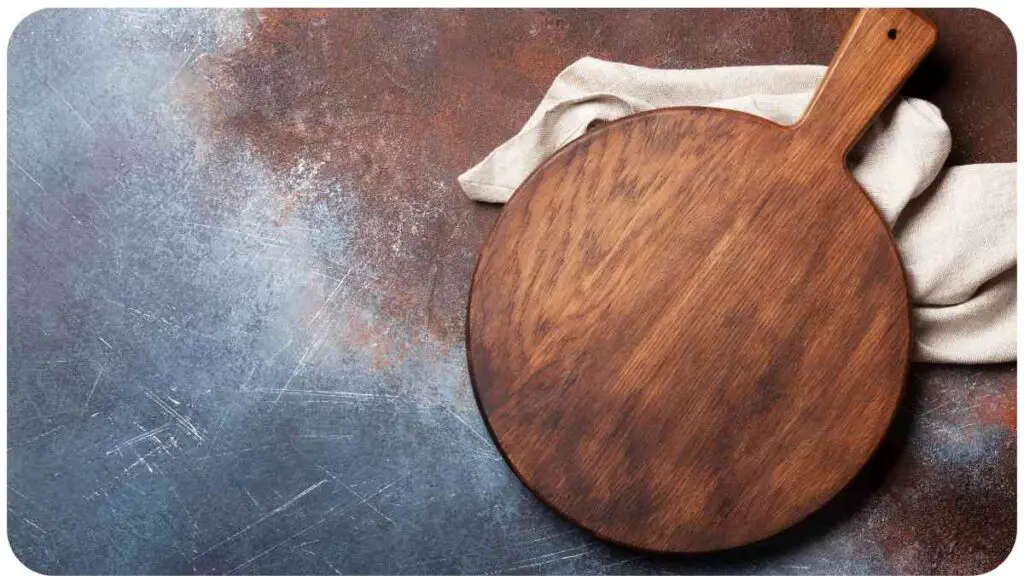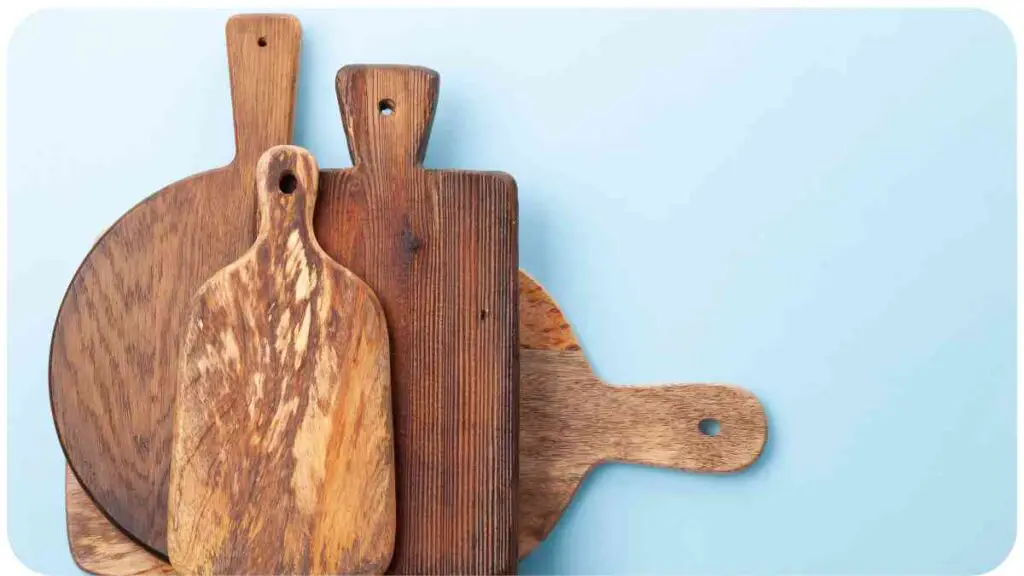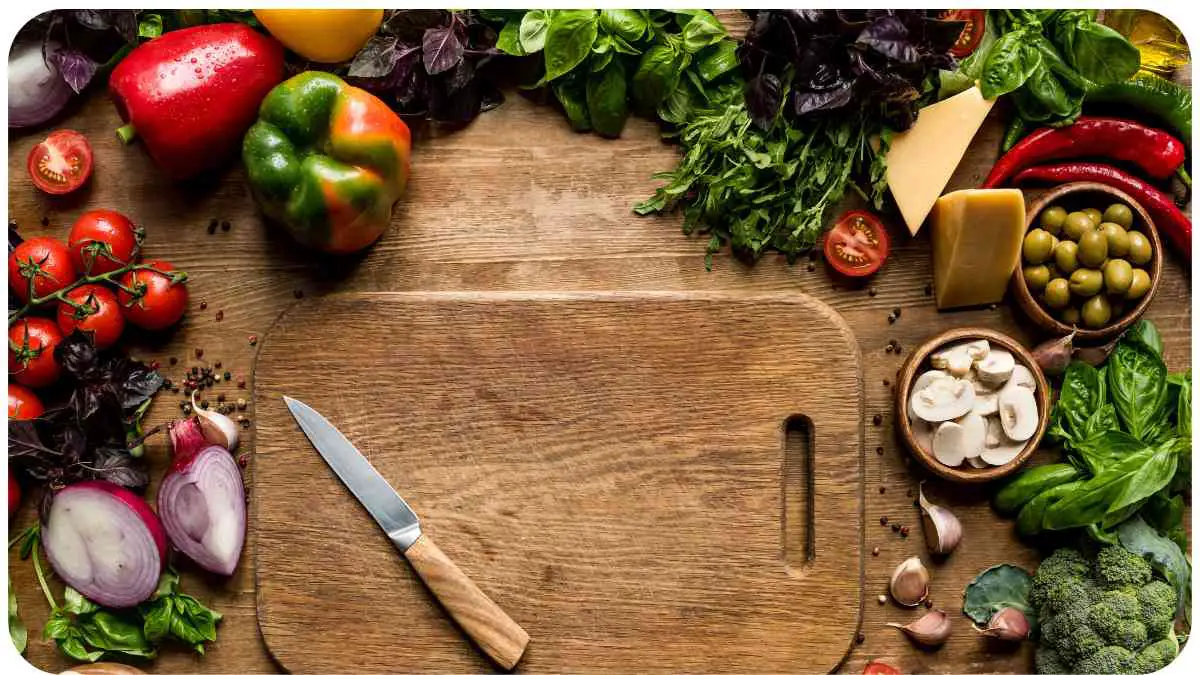Have you ever experienced the frustration of a cutting board slipping and sliding while you’re trying to prepare a meal? Not only can this be an annoyance, but it also poses a potential safety hazard.
In this article, we will explore various safety tips and techniques to prevent your cutting board from slipping. We’ll discuss the different types of cutting boards, factors that contribute to slippage, and best practices to ensure a stable and secure cutting surface. Let’s dive in!
2. Why It Is Important to Prevent Slippage
Preventing your cutting board from slipping is crucial for several reasons. Firstly, it increases your safety in the kitchen, reducing the risk of accidents and injuries. A stable cutting board allows you to maintain better control over your knife, preventing it from accidentally slipping and causing potential harm. Additionally, a secure cutting board ensures consistent and accurate cuts, improving the overall quality of your cooking.
Upgrade your cooking experience with the best kitchen gadgets for effortless home cooking. These innovative tools will make your culinary journey a breeze, allowing you to create delicious meals with ease.
3. Types of Cutting Boards

Before we delve into the strategies for preventing slippage, let’s first explore the different types of cutting boards available. Understanding their characteristics will help you make an informed decision when selecting the right one for your needs.
| Type of Cutting Board | Material | Features |
| Plastic | Plastic | Lightweight, dishwasher-safe, non-porous, and affordable |
| Wood | Wood (e.g. bamboo, maple) | Natural, knife-friendly, durable, but requires more upkeep |
| Glass | Tempered glass | Hygienic, visually appealing, resistant to stains and odors |
| Rubber | Rubber | Non-slip surface, excellent grip, more forgiving on knives |
| Composite | Composite (e.g. HDPE) | Durable, non-absorbent, knife-friendly, and heat-resistant |
4. Factors Influencing Slippage
Several factors contribute to the slippage of cutting boards. Understanding these factors will help you address the root causes and implement effective preventive measures. Let’s explore some of the key factors:
| Factors Influencing Slippage | Prevention Measures |
| Moisture on the Cutting Board | Wipe the surface dry before use or consider using a non-slip mat or towel |
| Type of Surface the Cutting Board is Placed On | Choose a stable and level surface for your cutting board, avoiding glass and tile |
| Weight and Thickness of the Cutting Board | Opt for a heavier and thicker cutting board to enhance stability |
| Type of Knife and Cutting Technique | Proper knife handling and cutting techniques can reduce slippage risk |
| Inadequate Grip between the Cutting Board and Surface | Utilize non-slip mats, clamps, or rubber feet to secure the cutting board in place |
| Excessive Force or Pressure during Cutting | Apply consistent and controlled pressure on the board while slicing or chopping |
5. Best Practices for Preventing Slipping
Now that we’ve identified the factors that contribute to slippage, let’s discuss the best practices to prevent your cutting board from sliding. Incorporating these techniques will enhance both your safety and cooking experience:
Discover the rising trend of plant-based eating and learn how to incorporate more veggies into your diet. Explore the benefits of a plant-based lifestyle and find creative ways to enjoy nutritious and delicious plant-based meals.
Using Non-Slip Mats or Grippers
One effective method to prevent slippage is by using non-slip mats or grippers. These are specially designed adhesive pads that provide friction between the cutting board and the surface it rests on. They come in various sizes and materials, such as silicone or rubber. By placing a non-slip mat or gripper under your cutting board, you create a stable surface that resists movement, ensuring a secure and safe cooking environment.
Securing the Cutting Board with Clamps
Another way to stabilize your cutting board is by using clamps. These versatile tools are excellent for securing the board to your countertop or table.
Clamps come in different styles, including adjustable and spring-loaded options. Simply attach the clamps to the edges of your cutting board and tighten them onto the surface. This method offers a robust hold, preventing any unwanted movements while you chop, slice,
or dice ingredients. Clamping your cutting board in place ensures stability and allows you to focus on your culinary tasks without the worry of slippage.
Applying Damp Towel or Cloth
If you don’t have non-slip mats or clamps readily available, a simple yet effective solution is to place a damp towel or cloth underneath your cutting board. The moisture from the towel creates a gripping effect, keeping the board firmly in place.
However, it’s important to ensure that the towel or cloth is not excessively wet, as this could lead to water damage or mold on the cutting board. Additionally, remember to reapply dampness as needed during extended chopping sessions to maintain the stability of the setup.
Unleash the power of spices in your cooking with a variety of herbs and spices. Elevate your dishes, enhance flavors, and bring a new dimension to your culinary creations by mastering the art of spice usage.
Choosing the Right Surface for Your Cutting Board
The surface on which your cutting board rests plays a significant role in preventing slippage. Avoid using glass or tiled surfaces, as they can be slippery and increase the likelihood of accidents. Instead, opt for stable surfaces, such as wood, granite, or plastic countertops.
These provide better traction and reduce the chances of your cutting board shifting during use. If necessary, you can place a damp towel or a non-slip mat on the surface for added grip.
6. Maintaining Your Cutting Board
Proper maintenance is essential to ensure the longevity and functionality of your cutting board. By keeping it in good condition, you reduce the risk of slippage and can enjoy a safe and reliable kitchen experience. Here are some maintenance tips to consider:
- Regularly clean your cutting board after each use, using warm soapy water and a sponge or brush. Avoid submerging it in water or running it through the dishwasher unless explicitly mentioned by the manufacturer.
- Dry the cutting board thoroughly after washing to prevent moisture accumulation, which could make the board more prone to slippage.
- Periodically oil wooden cutting boards to maintain their longevity and prevent drying or cracking. Mineral oil or food-grade oils like coconut or walnut oil are suitable options.
- Use a mild bleach solution or vinegar to sanitize your cutting board if it has come into contact with raw meat or other potentially harmful substances.
- Regularly inspect your cutting board for signs of wear and tear, such as deep grooves or cracks. Replace it if it becomes excessively damaged or difficult to clean.
Baking enthusiasts will love our ultimate list of kitchen gadgets designed specifically for bakers. These must-have tools and equipment will take your baking game to the next level, ensuring perfect results every time
Storing Your Cutting Board

To prevent accidental slips and maintain the quality of your cutting board, proper storage is crucial. Here are some pointers to follow when storing your cutting board:
- Store your cutting board in a clean and dry location, away from extreme temperatures and direct sunlight.
- If space permits, store the cutting board flat to maintain its shape and prevent warping.
- Consider using a dedicated cutting board rack or stand to keep it organized and easily accessible.
- Avoid stacking other heavy objects on top of the cutting board, as this could lead to cracks or deformation.
8. Alternatives for Preventing Slippage
Apart from the aforementioned methods, there are a few alternatives you can explore to enhance the stability of your cutting board:
- Double-sided adhesive pads: Attach these pads to the bottom of your cutting board to increase traction and prevent movement.
- Reusable silicone mats: Place a silicone baking mat or gripping pad underneath your cutting board to reduce slippage.
- Anti-slip spray: Apply a specialized anti-slip spray to the bottom of your cutting board to promote grip and stability.
Remember to assess these alternatives based on their suitability for your specific cutting board material and personal preferences.
Stay informed about food safety with our comprehensive guide on understanding food expiration dates. Learn how to interpret and utilize expiration dates effectively, ensuring the freshness and quality of the food you consume
Conclusion
Safeguarding yourself and maintaining control while using a cutting board is of utmost importance. By following the safety tips and techniques discussed in this article, you can significantly reduce the risk of slippage and create a secure working environment in your kitchen.
Remember to choose the right cutting board, address the factors influencing slippage, and implement preventive measures like non-slip mats, clamps, and damp towels. With proper care and attention, you will enjoy a safe and enjoyable cooking experience every time you step into the kitchen. Happy chopping!
Further Reading
Here are some additional resources for further reading on preventing cutting board slippage:
Quick Tips: Five Ways to Keep Your Cutting Board from Sliding: This article provides quick and practical tips to prevent your cutting board from slipping, including using damp towels, silicone mats, and more.
The Best Trick for Keeping a Cutting Board from Slipping: Discover a clever trick to keep your cutting board stable and secure, using an everyday household item.
How to Stop a Cutting Board from Sliding: This comprehensive guide on WikiHow offers detailed step-by-step instructions and various methods to prevent your cutting board from sliding.
FAQs
What is the best material for a non-slip cutting board?
The best material for a non-slip cutting board is rubber. Rubber cutting boards offer excellent grip and traction, ensuring stability during food preparation.
Can I use double-sided tape to prevent my cutting board from slipping?
While double-sided tape may temporarily secure your cutting board, it is not recommended as a long-term solution. The adhesive can leave residue on your cutting board and surface, and it may not provide consistent stability.
Is it necessary to clean and dry my cutting board after every use?
Yes, it is crucial to clean and dry your cutting board thoroughly after each use. This helps maintain hygiene, prevent bacterial growth, and prolong the lifespan of your cutting board.
Can I use a wet towel or cloth under my cutting board to prevent slippage?
Yes, you can use a damp towel or cloth under your cutting board as a temporary non-slip solution. However, ensure that the towel or cloth is not excessively wet to prevent water damage to the cutting board.
How often should I oil my wooden cutting board?
Wooden cutting boards should be oiled regularly, approximately once every month or depending on usage. Oiling helps maintain the moisture content of the wood, preventing it from drying out and cracking.

Hi, I’m Hellen James! I’m a professional chef who has been cooking for over 12 years. In my career, I’ve worked at some of the world’s most prestigious hotels and restaurants. My expertise lies in creating recipes that are simple but delicious, and I love to experiment with new ingredients and techniques. I started this blog because I want to share my passion for cooking with everyone who loves food as much as I do.


